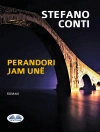‘Hullo, Gore!’ The young soldier stopped, started, colored with annoyance, and with a surprised expression turned to look on the other soldier who had addressed him. After a moment’s scrutiny of the stranger’s genial smile he extended his hand with pleased recognition. ‘Conniston, ‘ said he, ‘I thought you were in America.’
‘So I am; so don’t call me Conniston at the pitch of your voice, old boy. His lordship of that name is camping on Californian slopes for a big game shoot. The warrior who stands before you is Dick West of the .. Lancers, the old Come-to-the-Fronts. And what are you doing as an Imperial Yeoman, Gore?’
‘Not that name, ‘ said the other, with an anxious glance around. ‘Like yourself, I don’t want to be known.’
‘Oh! So you are sailing under false colors also?’
Sobre el autor
Finding that the novels of Émile Gaboriau were then very popular in Melbourne, Hume obtained and read a set of them and determined to write a novel of the same kind. The result was The Mystery of a Hansom Cab, set in Melbourne, with descriptions of poor urban life based on his knowledge of Little Bourke Street. It was self-published in 1886 and became a great success. Because he sold the British and American rights for 50 pounds, however, he reaped little of the potential financial benefit. It became the best-selling mystery novel of the Victorian era; in 1990 John Sutherland called it the ‘most sensationally popular crime and detective novel of the century’. This novel inspired Arthur Conan Doyle to write A Study in Scarlet, which introduced the fictional consulting detective Sherlock Holmes. Doyle remarked, ‘Hansom Cab was a slight tale, mostly sold by ‘puffing’.’
After the success of his first novel and the publication of another, Professor Brankel’s Secret (c.1886), Hume returned to England in 1888. He resided in London for a few years and then moved to the Essex countryside where he lived in Thundersley for 30 years. Eventually he produced more than 100 novels and short stories.












